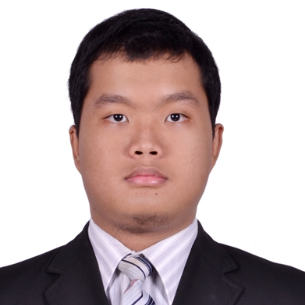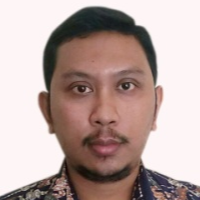International Journal of Information Technology and Computer Science (IJITCS)
IJITCS Vol. 9, No. 5, 8 May 2017
Cover page and Table of Contents: PDF (size: 564KB)
Analysis of Power Consumption Efficiency on Various IoT and Cloud-Based Wireless Health Monitoring Systems: A Survey
Full Text (PDF, 564KB), PP.31-39
Views: 0 Downloads: 0
Author(s)
Index Terms
Cloud Computing, Power Efficiency, Internet of Thing, Wireless Sensor Network, Wireless Health Monitoring Systems
Abstract
Nowadays, various Wireless Health Monitoring Systems use Internet of Things to transmit patient's data over Wireless Sensor Network and then the data is stored and processed via Cloud Computing, however, the use of different kind of Wireless Sensor on each system leads to power efficiency problem. This paper analyses and compares the consumption of power on six Wireless Health Monitoring Systems, which are invented to monitor the patient's condition and transfer the data using Wireless Sensor Network. Three different techniques are analyzed, namely GPRS/UMTS (used in one WHMS), Wi-Fi (used in one WHMS), and Bluetooth (used in four WHMS). This paper concludes that the systems that use Bluetooth as their transmission medium are more effective in reducing power consumption than the other systems that use GPRS/UMTS or Wi-Fi.
Cite This Paper
Beny Nugraha, Irawan Ekasurya, Gunawan Osman, Mudrik Alaydrus, "Analysis of Power Consumption Efficiency on Various IoT and Cloud-Based Wireless Health Monitoring Systems: A Survey", International Journal of Information Technology and Computer Science(IJITCS), Vol.9, No.5, pp.31-39, 2017. DOI:10.5815/ijitcs.2017.05.05
Reference
[1]K. Ahmed and M. Gregory, “Integrating wireless sensor networks with cloud computing,” in 2011 Seventh International Conference on Mobile Ad-hoc and Sensor Networks, 2011, pp. 364–366.
[2]E. Troubleyn, I. Moerman, and P. Demeester, “QoS Challenges in Wireless Sensor Networked Robotics,” Wirel. Pers. Commun., vol. 70, no. 3, March. 2013,pp. 1059–1075,.
[3]P. Mell and T. Grance, “The NIST Definition of Cloud Computing-Recommendations of the National Institute of Standards and Technology NIST,” NIST Spec. Publ., 2011.
[4]Qi Zhang, Lu Cheng, and Raouf Boutaba, “Cloud computing: state-of-the-art and research challenges,” Springer J Internet Serv Appl (2010) 1: 7–18.
[5]S. Rajan and A. Jairath, “Cloud Computing: The Fifth Generation of Computing,” in 2011 International Conference on Communication Systems and Network Technologies, 2011, pp. 665–667.
[6]M. Yuriyama and T. Kushida, “Sensor-cloud infrastructure-physical sensor management with virtualized sensors on cloud computing,” in 13th International Conference on Network-Based Information Systems, 2010, pp. 1–8.
[7]ENISA, “Security and Resilience in Governmental Clouds,” 2011. [Online]. https://www.enisa.europa.eu/publications/security-and-resilience-in-governmental-clouds. [Accessed: 03-Jul-2016].
[8]R. Aiswarya, R. Divya, D. Sangeetha, and V. Vaidehi, “Harnessing healthcare data security in cloud,” in 2013 International Conference on Recent Trends in Information Technology (ICRTIT), 2013, pp. 482–488.
[9]Rao, B.B.P.; Saluia, P.; Sharma, N.; Mittal, A.; Sharma, S.V., “Cloud computing for Internet of Things & sensing based applications,” in 2012 Sixth International Conference on Sensing Technology (ICST), 2012, pp. 374–380.
[10]S. Ziegler, C. Crettaz, L. Ladid, and S. Krco, “Iot6–moving to an ipv6-based future iot,” vol. 7858, pp. 161–172, 2013.
[11]H. Zhang and L. Zhu, “Internet of Things: Key technology, architecture and challenging problems,” 2011 IEEE Int. Conf. Comput. Sci. Autom. Eng., pp. 507–512, Jun. 2011.
[12]Jin-Shyan Lee, Yu-Wei Su, and Chung-Chou Shen (2007), “A Comparative Study of Wireless Protocols: Bluetooth, UWB, ZigBee, and Wi-Fi”, The 33rd Annual Conference of the IEEE Industrial Electronics Society (IECON), Nov. 5-8, 2007.
[13]ETSI, “General Packet Radio Service (GPRS),” 2016. [Online]. Retrieved from: http://www.etsi.org/technologies-clusters/technologies/mobile/gprs. [Accessed: 03-Jul-2016].
[14]ETSI, “Universal Mobile Telecommunications System (UMTS),” 2016. [Online]. Retrieved from: http://www.etsi.org/technologies-clusters/technologies/mobile/umts. [Accessed: 03-Jul-2016].
[15]Bourouis, A., Feham, M., and Bouchachia, A.(2011), “ Ubiquitous Mobile Health Monitoring System for Elderly (UMHMSE)”, International Journal of Computer Science and Information Technology, Vol.2, No. 3, June, pp. 74-82
[16]Orlando R. E. P., Caldeira, M. L. P. Lei S., and Rodrigues, J.P.C (2014), “An Efficient and Low Cost Windows Mobile BSN Monitoring SystemBased on TinyOS”, Journal of Telecommunication Systems, Vol. 54, No. 1, pp. 1-9
[17]Yuce, M. R.(2010)” Implementation of wireless body area networks for healthcare systems”, Sensor and Actuators A:Physical, Vol. 162, No. 1, July, pp. 116-129
[18]Xiaoliang Wang; Qiong Gui; Bingwei Liu; Zhanpeng Jin et al (2014), “Enabling Smart Personalized Healthcare: A Hybrid Mobile-Cloud Approach for ECG Telemonitoring”, IEEE Journal of Biomedical and Health Informatics, Vol. 18, No. 3, May, pp. 739 – 745
[19]Bin Yu; Lisheng Xu; Yongxu Li (2012) “Bluetooth Low Energy (BLE) based mobile electrocardiogram monitoring system”, In the proceedings of International Conference on Information and Automation, June 6-8, 2012, Shenyang, pp. 763-767 International Journal of Computer Networks & Communications (IJCNC), Vol.7, No.3, May 2015 29
[20]Ruipeng Gao; Liqiong Yang; Xinyu Wu; and Tao Wang, (2012) “A phone-based e-health system for OSAS and its energy issue”, In the proceedings of the International Symposium on Information Technology in Medicine and Education, August 3-5, 2012, Hokodate, Hokkaido, pp. 682-696
[21]G. Suciu, A. Vulpe, S. Halunga, O. Fratu, G. Todoran, and V. Suciu, “Smart Cities Built on Resilient Cloud Computing and Secure Internet of Things,” in 2013 19 th International Conference on Control Systems and Computer Science, 2013, pp. 513–518.



